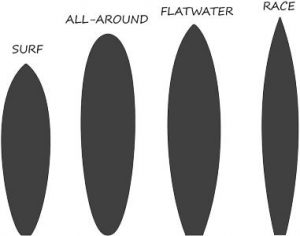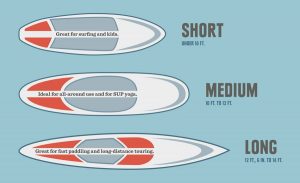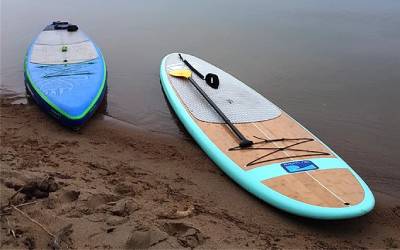Stand Up Paddle surfing is a new and fast-growing sport in the world. It’s easy to learn, and people from all age groups can do it. If you want to start it, you must first choose the right board for you. Choosing comes down to several factors like the price of the board, how you want to use the board and of course, your lifestyle. Shopping for SUP can be fun, and this article will help you make it easier.
Choose from different types of SUPs:

To select the perfect SUP for you must know about different types of SUP and also the specific requirements you might have. Before starting with the types, it is essential to understand that some types may overlap the others and that people like to use their boards for multiple activities. Following are the main types:
- All Around SUPs – These boards are a perfect choice for beginners as they are more versatile and can be used in all conditions. These boards are known to be family as well as dog friendly, and thus you can always take along some company.
- Surfing SUPs – These are meant for some rough waters, which is why they are perfect for intermediate to expert level paddlers. They are highly manoeuvrable and are also less stable than other boards which is why it is easy to fall off. In short, they are surfboards on steroids with a paddle.
- Touring SUPs – These are meant for paddling for longer distances and thus are intended for some serious paddlers. The way they are designed makes gliding easier and increases efficiency. They are wide and stable, which is why even intermediates can use them.
- Racing SUPs – These are aerodynamically designed for flat water races. They are generally longer and wider, which increases the glide performance and also boosts efficiency. They are meant for elite level paddlers and might be difficult for intermediate paddlers.
- Fishing SUPs – They have the highest volumes, which enables them to carry more weight in the form of fishing equipment. They have various other options like rod holders, fish finders or other things you might need for your journey.
Size of the Paddle Board:

This depends on the weight of the paddler and also the amount of experience he has. While buying SUPs, you must think of the board not in terms of weight but in terms of volume. The length, width and thickness will determine the volume. Higher the volume more stability and weight capacity will the board have.
Beginners should go for boards with more volume as they have greater stability, and thus paddling will be easy to learn. As your experience increases and skills improve, you can move on to a board with less volume as then although the stability will reduce but so will the drag. This means lesser volume boards will glide better.
Another aspect to consider is the hull shape. The two main types are:
- Displacement Hull – These boards have a pointed nose that helps displace water to the sides, giving a better glide. Touring boards usually have a displacement hull.
- Planing Hull – In these types the bottom slightly comes towards the edge like that in a board. This makes it a perfect choice for paddling or even surfing due to the design it has.
Inflatable vs Hard SUPs:
Now since you have decided on the type of the board its time to choose whether you want it to be inflatable or hard. They both have some significant differences.
- Usage – For all the beginners out there, an inflatable is a right choice as it is ideal for all conditions. But when it comes to performance, hard boards are always better as they provide increased speed, manoeuvrability and glide. They are also far more durable than mostly every inflatable board.
- Transportation – Since inflatables can be deflated and then folded thay are supper convenient to transport as can be stored in a car’s boot space. Hard boards, on the other hand, are more difficult to carry as they need a large vehicle or the roof of normal sized cars.
- Storage – Inflatables are perfect for people short on space in the same way as they are easy to transport. Hard boards need a lot of space. But remember not to expose them both to sunlight as it might affect the lamination.
Pricing:
This is the most crucial factor for most buyers. You want a board that is just perfect for the price that you pay. You can go for expensive ones but after a point its just brand value that changes. Which is why it is essential for you to do some research and compare prices and features.
- Entry Level Boards (less than $500) – To achieve lower prices, these boards often sacrifice on durability, material and design. The designs are not so cool, and the boards in this price range don’t last long when compared to those high-end boards.
- Premium Priced Boards ($500 and above) – These boards have fantastic quality and have a rigid and robust built which helps them to last longer. There are not many things you can expect from a paddle board. This range will have boards that can fulfil all your needs and on top of that will even look sexy.
